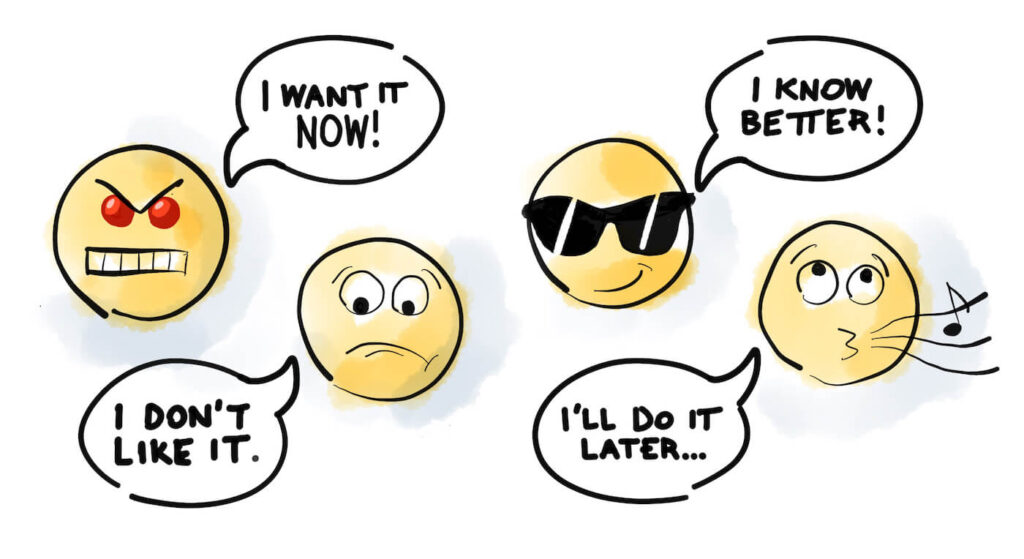
If your communication with difficult customers is not effective, starting with offering solutions is a fast path to failure.
Here’s one thing every salesperson has in common, have experienced or will. That is, dealing with a difficult customer.
We’ve all been there. The customer who we wish we never had. Yet, since the goal of every organization is to increase profit and revenue, we do our best to either tolerate their behavior or worse, try to “over-serve” the customer, thinking that by giving more, it will improve the relationship.
Think about the costly assumptions you’re making. First, assuming the customer is looking for a different or better solution.
Maybe they’re looking for something else, such as better service, trust, more training on your product/service, a stronger personal relationship.
What if there’s something going on in their personal life, since everyone is going through something? What if they’re looking for a deeper connection in a world of isolation?
The fact is, you don’t know why the customer is being difficult unless you ask the questions that uncover the root cause.
Chances are, they’re not frustrated with you but something else in their life. That’s why the solution to dealing with a difficult customer and make them not difficult, is demonstrating care, empathy and be nonjudgmental, while addressing this head-on, in a supportive way.
Here’s how.
“I’m sensing some frustration on your end, and own anything we did, if at all, to cause it. I’d love to reset our relationship and align around your expectations so we deliver the product and customer service you expect and achieve what you want, okay?
Your Customers Don’t Want a Relationship With You
Now that you’ve asked the question to uncover the root cause as to why they are being “difficult” so that you can create the space to reset the relationship, how can you help you build stronger client relationships? You don’t. Huh?
Even not having a relationship IS having a relationship, even though it’s not the relationship you want.
Here comes the second costly assumption sighted in this article. Do not assume your customers want a relationship. While you may want a certain type of relationship with them, don’t assume your customers want the same type of relationship you do.
Some just want a relationship that will enable you to deliver on your promise. Here is the enrollment talk track and five questions to help you align around the type of relationship your clients want – not you.
“Thanks for taking the time to discuss how you want to work together. What I want for you is to ensure we’re delivering the level of service and value you expect. Is it okay to ask you a few questions to ensure we develop and maintain the type of relationship you want?”1
- How would you define a successful vendor partnership/engagement? What does that look like to you?
- Can you share an example?
- What can we do to ensure we maintain our positive relationship?
- What would hurt or possibly end our relationship?
- How can we best deliver on your expectations?
- What type of response time do you expect from us?
- What’s the best way to contact you?
- What’s your expectation or definition of exemplary, 5-Star customer service?
- What data/key performance indicators or metrics do you use to assess the impact of our deliverable and customer service, and if your expectations were met? How do you collect this data?
- If a problem arises, how would you want to work together and resolve it so it doesn’t happen again?
Rather than assume the type of relationship you want, uncover the type of relationship your customers expect in order to serve them best.
This way, you’re not trying to build a relationship that your customers don’t really want and instead, are uncovering how you can align the type of relationship or said a different way, the level of service that each individual customer wants and needs from you.


